DeWalt DW888 Handleiding
DeWalt
Slijpmachine
DW888
Bekijk gratis de handleiding van DeWalt DW888 (7 pagina’s), behorend tot de categorie Slijpmachine. Deze gids werd als nuttig beoordeeld door 78 mensen en kreeg gemiddeld 4.5 sterren uit 39.5 reviews. Heb je een vraag over DeWalt DW888 of wil je andere gebruikers van dit product iets vragen? Stel een vraag
Pagina 1/7

INSTRUCTION MANUAL
GUIDE D'UTILISATION
MANUAL DE INSTRUCCIONES
DWE4887, DWE4887N, DW888
Die Grinders
Meules à rectifier les matrices
Esmeriladoras de troquel
INSTRUCTIVO DE OPERACIÓN, CENTROS DE SERVICIO Y PÓLIZA DE
GARANTÍA. ADVERTENCIA: LÉASE ESTE INSTRUCTIVO ANTES DE
USAR EL PRODUCTO.
Defi nitions: Safety Guidelines
The definitions below describe the level of severity for each signal word. Please
read the manual and pay attention to these symbols.
DANGER: Indicates an imminently hazardous situation which, if not avoided,
will result in death or serious injury.
WARNING: Indicates a potentially hazardous situation which, if not avoided,
could result in death or serious injury.
CAUTION: Indicates a potentially hazardous situation which, if not avoided, may
result in minor or moderate injury.
NOTICE: Indicates a practice which, if not not related to personal injury
avoided, may result in property damage.
IF YOU HAVE ANY QUESTIONS OR COMMENTS ABOUT THIS OR ANY DEWALT TOOL, CALL
US TOLL FREE AT: 1-800-4-DEWALT (1-800-433-9258).
WARNING: To reduce the risk of injury, read the instruction manual.
General Power Tool Safety Warnings
WARNING! Read all safety warnings and all instructions. Failure to follow the warnings
and instructions may result in electric shock, fire and/or serious injury.
SAVE ALL WARNINGS AND INSTRUCTIONS
FOR FUTURE REFERENCE
The term “power tool” in the warnings refers to your mains-operated (corded) power tool or battery-
operated (cordless) power tool.
1) WORK AREA SAFETY
a) Keep work area clean and well lit. Cluttered or dark areas invite accidents.
b) Do not operate power tools in explosive atmospheres, such as in the presence of
flammable liquids, gases or dust. Power tools create sparks which may ignite the dust or
fumes.
c) Keep children and bystanders away while operating a power tool. Distractions can
cause you to lose control.
2) ELECTRICAL SAFETY
a) Power tool plugs must match the outlet. Never modify the plug in any way. Do not
use any adapter plugs with earthed (grounded) power tools. Unmodified plugs and
matching outlets will reduce risk of electric shock.
b) Avoid body contact with earthed or grounded surfaces such as pipes, radiators,
ranges and refrigerators. There is an increased risk of electric shock if your body is earthed
or grounded.
c) Do not expose power tools to rain or wet conditions. Water entering a power tool will
increase the risk of electric shock.
d) Do not abuse the cord. Never use the cord for carrying, pulling or unplugging the
power tool. Keep cord away from heat, oil, sharp edges or moving parts. Damaged
or entangled cords increase the risk of electric shock.
e) When operating a power tool outdoors, use an extension cord suitable for outdoor
use. Use of a cord suitable for outdoor use reduces the risk of electric shock.
f) If operating a power tool in a damp location is unavoidable, use a ground fault
circuit interrupter (GFCI) protected supply. Use of a GFCI reduces the risk of electric
shock.
3) PERSONAL SAFETY
a) Stay alert, watch what you are doing and use common sense when operating a
power tool. Do not use a power tool while you are tired or under the influence of
drugs, alcohol or medication. A moment of inattention while operating power tools may
result in serious personal injury.
b) Use personal protective equipment. Always wear eye protection. Protective
equipment such as dust mask, non-skid safety shoes, hard hat, or hearing protection used
for appropriate conditions will reduce personal injuries.
c) Prevent unintentional starting. Ensure the switch is in the off position before
connecting to power source and/or battery pack, picking up or carrying the tool.
Carrying power tools with your finger on the switch or energizing power tools that have the
switch on invites accidents.
d) Remove any adjusting key or wrench before turning the power tool on. A wrench or
a key left attached to a rotating part of the power tool may result in personal injury.
e) Do not overreach. Keep proper footing and balance at all times. This enables better
control of the power tool in unexpected situations.
f) Dress properly. Do not wear loose clothing or jewelry. Keep your hair, clothing and
gloves away from moving parts. Loose clothes, jewelry or long hair can be caught in
moving parts.
g) If devices are provided for the connection of dust extraction and collection facilities,
ensure these are connected and properly used. Use of dust collection can reduce dust-
related hazards.
4) POWER TOOL USE AND CARE
a) The Do not force the power tool. Use the correct power tool for your application.
correct power tool will do the job better and safer at the rate for which it was designed.
b) Do not use the power tool if the switch does not turn it on and off. Any power tool
that cannot be controlled with the switch is dangerous and must be repaired.
c) Disconnect the plug from the power source and/or the battery pack from the power
tool before making any adjustments, changing accessories, or storing power tools.
Such preventive safety measures reduce the risk of starting the power tool accidentally.
d) Store idle power tools out of the reach of children and do not allow persons
unfamiliar with the power tool or these instructions to operate the power tool.
Power tools are dangerous in the hands of untrained users.
DEWALT Industrial Tool Co., 701 East Joppa Road, Baltimore, MD 21286
(FEB14) Part No. N279291 DWE4887, DWE4887N, DW888
Copyright © 2002, 2004, 2005, 2007, 2011, 2013, 2014 DEWALT
The following are trademarks for one or more DEWALT power tools: the yellow and black color scheme; the “D”
shaped air intake grill; the array of pyramids on the handgrip; the kit box configuration; and the array of lozenge-
shaped humps on the surface of the tool.
If you have questions or comments, contact us.
Pour toute question ou tout commentaire, nous contacter.
Si tiene dudas o comentarios, contáctenos.
1-800-4-D WALT • www.dewalt.comE
e) Maintain power tools. Check for misalignment or binding of moving parts, breakage
of parts and any other condition that may affect the power tool’s operation. If
damaged, have the power tool repaired before use. Many accidents are caused by
poorly maintained power tools.
f) Keep cutting tools sharp and clean. Properly maintained cutting tools with sharp cutting
edges are less likely to bind and are easier to control.
g) Use the power tool, accessories and tool bits, etc. in accordance with these
instructions, taking into account the working conditions and the work to be
performed. Use of the power tool for operations different from those intended could result
in a hazardous situation.
5) SERVICE
a) Have your power tool serviced by a qualified repair person using only identical
replacement parts. This will ensure that the safety of the power tool is maintained.
SAFETY INSTRUCTIONS FOR ALL OPERATIONS
Safety Warnings Common for Grinding, Sanding, Polishing,
Carving or Abrasive Cutting-Off Operations
a) This power tool is intended to function as a grinder, sander, polisher, carving or
cut-off tool. Read all safety warnings, instructions, illustrations and specifications
provided with this power tool. Failure to follow all instructions listed below may result in
electric shock, fire and/or serious injury.
b) Operations such as wire brushing are not recommended to be performed with this
power tool. Operations for which the power tool was not designed may create a hazard and
cause personal injury.
c) Do not use accessories which are not specifically designed and recommended by
the tool manufacturer. Just because the accessory can be attached to your power tool, it
does not assure safe operation.
d) The rated speed of the accessories must be at least equal to the maximum speed
marked on the power tool. Accessories running faster than their rated speed can break
and fly apart.
e) The outside diameter and the thickness of your accessory must be within the
capacity rating of your power tool. Incorrectly sized accessories cannot be adequately
guarded or controlled.
f) The arbor size of wheels, sanding drums or any other accessory must properly fit
the spindle or collet of the power tool. Accessories that do not match the mounting
hardware of the power tool will run out of balance, vibrate excessively and may cause loss
of control.
g) Mandrel mounted wheels, sanding drums, cutters or other accessories must be
fully inserted into the collet or chuck. If the mandrel is insufficiently held and/or the
overhang of the wheel is too long, the mounted wheel may become loose and be ejected at
high velocity.
h) Do not use a damaged accessory. Before each use, inspect the accessory such as
abrasive wheels for chips and cracks, sanding drum for cracks, tear or excess wear,
wire brush for loose or cracked wires. If power tool or accessory is dropped, inspect
for damage or install an undamaged accessory. After inspecting and installing an
accessory, position yourself and bystanders away from the plane of the rotating
accessory and run the power tool at maximum no-load speed for one minute.
Damaged accessories will normally break apart during this test time.
i) Wear personal protective equipment. Depending on application, use face shield,
safety goggles or safety glasses. As appropriate, wear dust mask, hearing
protectors, gloves and workshop apron capable of stopping small abrasive or
workpiece fragments. The eye protection must be capable of stopping flying debris
generated by various operations. The dust mask or respirator must be capable of filtrating
particles generated by your operation. Prolonged exposure to high intensity noise may cause
hearing loss.
j) Keep bystanders a safe distance away from work area. Anyone entering the work
area must wear personal protective equipment. Fragments of workpiece or of a broken
accessory may fly away and cause injury beyond immediate area of operation.
k) Hold power tool by insulated gripping surfaces only, when performing an operation
where the cutting accessory may contact hidden wiring or its own cord. Cutting
accessory contacting a “live” wire may make exposed metal parts of the power tool “live”
and could give the operator an electric shock.
l) Always hold the tool firmly in your hand(s) during the start-up. The reaction torque of
the motor, as it accelerates to full speed, can cause the tool to twist.
m) Use clamps to support workpiece whenever practical. Never hold a small workpiece
in one hand and the tool in the other hand while in use. Clamping a small workpiece
allows you to use your hand(s) to control the tool. Round material such as dowel rods, pipes
or tubing have a tendency to roll while being cut, and may cause the bit to bind or jump
toward you.
n) Position the cord clear of the spinning accessory. If you lose control, the cord may be
cut or snagged and your hand or arm may be pulled into the spinning accessory.
o) Never lay the power tool down until the accessory has come to a complete stop.
The spinning accessory may grab the surface and pull the power tool out of your control.
p) After changing the bits or making any adjustments, make sure the collet nut, chuck
or any other adjustment devices are securely tightened. Loose adjustment devices
can unexpectedly shift, causing loss of control, loose rotating components will be violently
thrown.
q) Do not run the power tool while carrying it at your side. Accidental contact with the
spinning accessory could snag your clothing, pulling the accessory into your body.
r) Regularly clean the power tool’s air vents. The motor’s fan will draw the dust inside the
housing and excessive accumulation of powdered metal may cause electrical hazards.
s) Do not operate the power tool near flammable materials. Sparks could ignite these
materials.
t) Do not use accessories that require liquid coolants. Using water or other liquid coolants
may result in electrocution or shock.
FURTHER SAFETY INSTRUCTIONS FOR ALL OPERATIONS
Kickback and Related Warnings
Kickback is a sudden reaction to a pinched or snagged rotating wheel, sanding pad, brush
or any other accessory. Pinching or snagging causes rapid stalling of the rotating accessory
which in turn causes the uncontrolled power tool to be forced in the direction opposite of the
accessory’s rotation.
For example, if an abrasive wheel is snagged or pinched by the workpiece, the edge of the wheel
that is entering into the pinch point can dig into the surface of the material causing the wheel to
climb out or kick out. The wheel may either jump toward or away from the operator, depending
on direction of the wheel’s movement at the point of pinching. Abrasive wheels may also break
under these conditions.
Kickback is the result of tool misuse and/or incorrect operating procedures or conditions and
can be avoided by taking proper precautions as given below:
a) Maintain a firm grip on the power tool and position your body and arm to allow you
to resist kickback forces. The operator can control kickback forces, if proper precautions
are taken.
b) Use special care when working corners, sharp edges etc. Avoid bouncing and
snagging the accessory. Corners, sharp edges or bouncing have a tendency to snag the
rotating accessory and cause loss of control or kickback.
c) Do not attach a toothed saw blade. Such blades create frequent kickback and loss of
control.
d) Always feed the bit into the material in the same direction as the cutting edge is
exiting from the material (which is the same direction as the chips are thrown).
Feeding the tool in the wrong direction causes the cutting edge of the bit to climb out of the
work and pull the tool in the direction of this feed.
e) When using rotary files, cut-off wheels, high-speed cutters or tungsten carbide
cutters, always have the work securely clamped. These wheels will grab if they become
slightly canted in the groove, and can kickback. When a cut-off wheel grabs, the wheel itself
usually breaks. When a rotary file, high-speed cutter or tungsten carbide cutter grabs, it may
jump from the groove and you could lose control of the tool.
Safety Warnings Specifi c for Grinding and Abrasive
Cutting-Off Operations
a) Use only wheel types that are recommended for your power tool and only for
recommended applications. For example: do not grind with the side of a cut-off
wheel. Abrasive cut-off wheels are intended for peripheral grinding, side forces applied to
these wheels may cause them to shatter.
b) For threaded abrasive cones and plugs use only undamaged wheel mandrels with
an unrelieved shoulder flange that are of correct size and length. Proper mandrels
will reduce the possibility of breakage.
c) Do not “jam” the cut-off wheel or apply excessive pressure. Do not attempt to
make an excessive depth of cut. Overstressing the wheel increases the loading and
susceptibility to twisting or snagging of the wheel in the cut and the possibility of kickback or
wheel breakage.
d) Do not position your hand in line with and behind the rotating wheel. When the
wheel, at the point of operation, is moving away from your hand, the possible kickback may
propel the spinning wheel and the power tool directly at you.
e) When wheel is pinched, snagged or when interrupting a cut for any reason, switch
off the power tool and hold the power tool motionless until the wheel comes to a
complete stop. Never attempt to remove the cut-off wheel from the cut while the
wheel is in motion, otherwise kickback may occur. Investigate and take corrective
action to eliminate the cause of wheel binding.
f) Do not restart the cutting operation in the workpiece. Let the wheel reach full
speed and carefully reenter the cut. The wheel may bind, walk up or kickback if the
power tool is restarted in the workpiece.
g) Support panels or any oversized workpiece to minimize the risk of wheel pinching
and kickback. Large workpieces tend to sag under their own weight. Supports must be
placed under the workpiece near the line of cut and near the edge of the workpiece on both
sides of the wheel.

h) Use extra caution when making a “pocket cut” into existing walls or other blind
areas. The protruding wheel may cut gas or water pipes, electrical wiring or objects that can
cause kickback.
Additional Safety Information
• Do not use Type 11 (flaring cup) wheels on this tool. Using inappropriate accessories can
result in injury.
• Air vents often cover moving parts and should be avoided. Loose clothes, jewelry or long
hair can be caught in moving parts.
• An extension cord must have adequate wire size (AWG or American Wire Gauge) for
safety. The smaller the gauge number of the wire, the greater the capacity of the cable, that is
16 gauge has more capacity than 18 gauge. An undersized cord will cause a drop in line voltage
resulting in loss of power and overheating. When using more than one extension to make up
the total length, be sure each individual extension contains at least the minimum wire size. The
following table shows the correct size to use depending on cord length and nameplate ampere
rating. If in doubt, use the next heavier gauge. The smaller the gauge number, the heavier the
cord.
Minimum Gauge for Cord Sets
Ampere Rating
Volts Total Length of Cord in Feet (meters)
120V 25 (7.6) 50 (15.2) 100 (30.5) 150 (45.7)
240V 50 (15.2) 100 (30.5) 200 (61.0) 300 (91.4)
More
Than
Not More
Than AWG
0 6 18 16 16 14
6 10 18 16 14 12
10 12 16 16 14 12
12 16 14 12 Not Recommended
WARNING: ALWAYS use safety glasses. Everyday eyeglasses are NOT safety glasses. Also use
face or dust mask if cutting operation is dusty. ALWAYS WEAR CERTIFIED SAFETY EQUIPMENT:
• ANSI Z87.1 eye protection (CAN/CSA Z94.3),
• ANSI S12.6 (S3.19) hearing protection,
• NIOSH/OSHA/MSHA respiratory protection.
WARNING: Some dust created by power sanding, sawing, grinding, drilling, and other
construction activities contains chemicals known to the State of California to cause cancer, birth
defects or other reproductive harm. Some examples of these chemicals are:
• lead from lead-based paints,
• crystalline silica from bricks and cement and other masonry products, and
• arsenic and chromium from chemically-treated lumber.
Your risk from these exposures varies, depending on how often you do this type of work. To reduce
your exposure to these chemicals: work in a well ventilated area, and work with approved safety
equipment, such as those dust masks that are specially designed to filter out microscopic particles.
• Avoid prolonged contact with dust from power sanding, sawing, grinding, drilling, and
other construction activities. Wear protective clothing and wash exposed areas with
soap and water. Allowing dust to get into your mouth, eyes, or lay on the skin may promote
absorption of harmful chemicals.
WARNING: Use of this tool can generate and/or disperse dust, which may cause serious and
permanent respiratory or other injury. Always use NIOSH/OSHA approved respiratory protection
appropriate for the dust exposure. Direct particles away from face and body.
WARNING: Always wear proper personal hearing protection that conforms to ANSI
S12.6 (S3.19) during use. Under some conditions and duration of use, noise from this product
may contribute to hearing loss.
WARNING: Always use eye protection. All users and bystanders must wear eye protection
that conforms to ANSI Z87.1.
WARNING: When not in use, place grinder on a stable surface where it will not move
inadvertantly, roll or cause a tripping or falling hazard. Serious personal injury may result.
CAUTION: To reduce the risk of personal injury, use extra care when working into a corner or
edge because a sudden, sharp movement of the tool may be experienced when the wheel or other
accessory contacts a secondary surface or a surface edge.
• The label on your tool may include the following symbols. The symbols and their definitions are
as follows:
V .....................volts A .........................amperes
Hz ...................hertz W ........................watts
min .................minutes or AC .............alternating current
or DC .....direct current or AC/DC......alternating or direct current
...................Class I Construction no .......................no load speed
...
...
...
.........
......
......
...........
.....
.....
...........
......
......
.........
...
...
...(grounded) n .........................rated speed
................... Class II Construction .......................earthing terminal
(double insulated) ........................safety alert symbol
…/min ............per minute BPM ...................beats per minute
IPM .................impacts per minute RPM ...................revolutions per minute
SPM ...............strokes per minute sfpm ...................surface feet per minute
SAVE THESE INSTRUCTIONS FOR FUTURE USE
Motor
Be sure your power supply agrees with the nameplate marking. Voltage decrease of more than 10%
will cause loss of power and overheating. All DEWALT tools are factory tested; if this tool does not
operate, check the power supply.
COMPONENTS (Fig. 1, 2)
WARNING: Never modify the power tool or any part of it. Damage or personal injury could result.
A. Paddle switch (DWE4887, DWE4887N)
B. Lock-on button (DWE4887, DW888)
C. Lock-off lever (DWE4887, DWE4887N)
D. Trigger switch (DW888)
E. Spindle
F. Collet nut
G. Small spanner (13 mm)
H. Large spanner (17 mm)
I. Collet [1/4" (6.35 mm)]
INTENDED USE
The DWE4887, DWE4887N and DW888 heavy-duty die grinders have been designed for
professional grinding. use under wet conditions or in presence of flammable liquids or DO NOT
gases.
These heavy-duty die grinders are professional power tools. let children come into contact DO NOT
with the tool. Supervision is required when inexperienced operators use this tool.
Switches
WARNING: Before connecting the tool to a power source depress and release the switch once
without depressing the lock-on button to ensure that the switch is off. Depress and release the
switch as described above after any interruption in power supply to the tool, such as the activation
of a ground fault interrupter, throwing of a circuit breaker, accidental unplugging, or power failure. If
the switch is locked on, the tool will start unexpectedly when it is reconnected.
WARNING: Grasp tool firmly with both hands to maintain control of the tool at start up and
during use and until the wheel or accessory stops rotating. Make sure the wheel has come to a
complete stop be fore laying the tool down.
WARNING: To reduce unexpected tool movement, do not switch the tool on or off while under
load conditions. Allow the grinder to run up to full speed before touching the work surface. Lift the
tool from the surface before turning the tool off.
PADDLE SWITCH – DWE4887, DWE4887N (FIG. 1)
The lock-off lever (C), located on the paddle switch, is a safety feature that prevents accidental
activation of the grinder.
To turn the tool on, push the lock-off lever (C) toward the back of the tool, then depress the paddle
switch (A). The tool will run while the switch is depressed. Turn the tool off by releasing the paddle
switch.
WARNING: Do not disable the lock-off lever. If the lock-off lever is disabled, the tool may start
unexpectedly when it is laid down.
TRIGGER SWITCH – DW888 (FIG. 2)
Depressing the trigger switch turns the tool on. Releasing it turns the tool off. To lock the switch on,
fully depress the trigger switch, press and hold in the lock-on button (B), release the trigger switch
and the lock-on button. The tool will now remain on. To turn turn the tool off, depress and release
the trigger switch.
Lock-on Button – DWE4887, DW888 (Fig. 1, 2)
The lock-on button offers increased comfort in extended use applications. To lock the tool on, push
the lock-off lever (C, DWE4887) then depress the paddle switch/trigger switch.
With the tool running, depress the lock-on button (B). The tool will continue to run after the paddle
switch is released.
To unlock the tool, depress and release the paddle switch/trigger switch. This will cause the tool
to stop.
WARNING: Allow the tool to reach full speed before touching tool to the work surface. Lift the
tool from the work surface before turning the tool off.
REMOVAL OF LOCK-ON FEATURE (DW888)
The lock-on button (B) can be permanently removed without compromising compliance with
regulatory agencies shown on the tool’s nameplate. Removal of the lock pin must be done by a
DEWALT Service Center.
OPERATION
WARNING: To reduce the risk of serious personal injury, turn tool off and disconnect tool
from power source before making any adjustments or removing/installing attachments
or accessories. Before reconnecting the tool, depress and release the trigger switch to
ensure that the tool is off.
FIG. 3
WARNING: Grasp tool firmly with both hands to maintain control of the tool at start up
and during use and until the wheel or accessory stops rotating. Make sure the wheel has
come to a complete stop be fore laying the tool down.
Put the work in a vise or clamp it securely. Use a face mask over the nose and mouth if the
operation raises dust. Treat the wheel with respect. Do not jam the wheel into the work or use
unnecessary pressure. Grind only on the edge of the wheel (Fig. 3), unless you have a special wheel
specifically made to permit grinding on the face of the wheel.
Mounting an Accessory (Fig. 1, 2)
WARNING: Accessories must be rated at least equal to the maximum speed marked on the
tool. Accessories running faster than their rated speed can break and fly apart.
WARNING: Accessories must be within the capacity rating marked on the tool. Incorrectly sized
accessories cannot be adequately controlled.
WARNING: Do not use accessories with a mandrel length exceeding 2.0" (50mm). Ensure that
the exposed mandrel length is no more than 1.0" (25mm) after inserting accessory into collet.
WARNING: Projectile hazard. Only use bits with shanks that match the installed collet.
Smaller shank bits will not be secure and could become loose during operation.
CAUTION: Never tighten the collet without first installing a router bit in it. Tightening an empty
collet, even by hand, can damage the collet.
This tool comes with a 1/4" (6.35 mm) collet (I).
1. Hold the spindle (E) using the smaller spanner (G) provided.
2. Loosen the collet nut (F) by turning it counterclockwise.
3. Insert the shank of the accessory into the collet (I).
4. Securely tighten the collet using the larger spanner (H) provided.
To remove the accessory, proceed in reverse order.
When starting the tool (with a new or replacement wheel installed) hold the tool in a well protected
area. If the wheel has an undetected crack or flaw, it should burst in less than one minute. Never
start tool with a person in line with the wheel. This includes the operator.
Precautions To Take When Sanding Paint
1. Sanding of lead based paint is NOT RECOMMENDED due to the difficulty of controlling the
contaminated dust. The greatest danger of lead poisoning is to children and pregnant women.
2. Since it is difficult to identify whether or not a paint contains lead without a chemical analysis,
we recommend the following precautions when sanding any paint:
PERSONAL SAFETY
1. No children or pregnant women should enter the work area where the paint sanding is being
done until all clean up is completed.
2. A dust mask or respirator should be worn by all persons entering the work area. The filter
should be replaced daily or whenever the wearer has difficulty breathing.
NOTE: Only those dust masks suitable for working with lead paint dust and fumes should be
used. Ordinary painting masks do not offer this protection. See your local hardware dealer for
the proper NIOSH-approved mask.
3. NO EATING, DRINKING or SMOKING should be done in the work area to prevent ingesting
contaminated paint particles. Workers should wash and clean up BEFORE eating, drinking or
smoking. Articles of food, drink, or smoking should not be left in the work area where dust
would settle on them.
ENVIRONMENTAL SAFETY
1. Paint should be removed in such a manner as to minimize the amount of dust generated.
2. Areas where paint removal is occurring should be sealed with plastic sheeting of 4 mils
thickness.
3. Sanding should be done in a manner to reduce tracking of paint dust outside the work area.
CLEANING AND DISPOSAL
1. All surfaces in the work area should be vacuumed and thoroughly cleaned daily for the duration
of the sanding project. Vacuum filter bags should be changed frequently.
2. Plastic drop cloths should be gathered up and disposed of along with any dust chips or other
removal debris. They should be placed in sealed refuse receptacles and disposed of through
regular trash pick-up procedures.
During clean up, children and pregnant women should be kept away from the immediate work
area.
3. All toys, washable furniture and utensils used by children should be washed thoroughly before
being used again.
MAINTENANCE
WARNING: To reduce the risk of serious personal injury, turn tool off and disconnect tool
from power source before making any adjustments or removing/installing attachments
or accessories. Before reconnecting the tool, depress and release the trigger switch to
ensure that the tool is off.
Cleaning
WARNING: Blowing dust and grit out of motor and switch actuator using clean, dry compressed
air is a necessary regular maintenance procedure. Dust and grit containing metal particles often
accumulate on interior surfaces and could create an electrical shock or electrocution if not
frequently cleaned out. It is recommended that a ground fault circuit interrupter (GFCI) is utilized to
further protect the user from electric shock resulting from the accumulation of conductive particles.
If the tool is deactivated by the GFCI, unplug the tool and check and clean the tool before resetting
the GFCI. ALWAYS WEAR SAFETY GLASSES (ANSI Z87.1) when cleaning or using this tool.
WARNING: Never use solvents or other harsh chemicals for cleaning the non-metallic parts
of the tool. These chemicals m ay weaken the plastic materials used in these parts. Use a cloth
dampened only with water and mild soap. Never let any liquid get inside the tool; never immerse
any part of the tool into a liquid.
Lubrication
Your power tool requires no additional lubrication.
Motor Brushes
DWE4887, DWE4887N
Please contact your local service center to inspect brushes.
DW888 2" (50 mm) DIE GRINDER
MEULES À RECTIFIER LES MATRICES DW888 DE 50 mm (2 po)
ESMERILADORA DE TROQUEL DW888 DE 50 mm (2")
FIG. 2
D
B
F
I
E
FIG. 1
A
B
H
DWE4887
1-1/2" (38 mm) DIE GRINDER
MEULES À RECTIFIER LES MATRICES DWE4887
DE 38 mm (1-1/2 po)
ESMERILADORA DE TROQUEL DWE4887
DE 38 mm (1-1/2")
C
DWE4887N
1-1/2" (38 mm) DIE GRINDER
MEULES À RECTIFIER LES MATRICES DWE4887
DE 38 mm (1-1/2 po)
ESMERILADORA DE TROQUEL DWE4887
DE 38 mm (1-1/2")
F
E
F
I
E
G

Défi nitions: lignes directrices en
matière de sécurité
Les définitions ci-dessous décrivent le niveau de danger pour chaque
mot-indicateur employé. Lire le mode d’emploi et porter une attention
particulière à ces symboles.
DANGER : indique une situation dangereuse imminente qui, si elle n’est pas
évitée, entraînera la mort ou des blessures graves.
AVERTISSEMENT: indique une situation potentiellement dangereuse qui,
si elle n’est pas évitée, entraîner lapourrait mort ou des blessures graves.
ATTENTION: indique une situation potentiellement dangereuse qui, si elle
n’est pas évitée, entraîner des pourrait blessures légères ou modérées.
AVIS : indique une pratique ne posant aucun risque de dommages corporels
mais qui par contre, si rien n’est fait pour l’éviter, poser despourrait risques de
dommages matériels.
POUR TOUTE QUESTION OU REMARQUE AU SUJET DE CET OUTIL OU DE TOUT AUTRE
OUTIL DEWALT, COMPOSEZ LE NUMÉRO SANS FRAIS : 1 800 433-9258 (1 800 4-DEWALT).
AVERTISSEMENT : afin de réduire le risque de blessures, lire le mode d’emploi de l’outil.
Avertissements de sécurité généraux pour les outils
électriques
AVERTISSEMENT! Lire tous les avertissements de sécurité et toutes les directives.
Le non-respect des avertissements et des directives pourrait se solder par un choc
électrique, un incendie et/ou une blessure grave.
CONSERVER TOUS LES AVERTISSEMENTS ET TOUTES LES
DIRECTIVES POUR UN USAGE ULTÉRIEUR
Le terme « outil électrique » cité dans les avertissements se rapporte à votre outil électrique à
alimentation sur secteur (avec fil) ou par piles (sans fil).
1) SÉCURITÉ DU LIEU DE TRAVAIL
a) Tenir l’aire de travail propre et bien éclairée. Les lieux encombrés ou sombres sont
propices aux accidents.
b) Ne pas faire fonctionner d’outils électriques dans un milieu déflagrant, tel qu’en
présence de liquides, de gaz ou de poussières inflammables. Les outils électriques
produisent des étincelles qui pourraient enflammer la poussière ou les vapeurs.
c) Éloigner les enfants et les personnes à proximité pendant l’utilisation d’un outil
électrique. Une distraction pourrait en faire perdre la maîtrise à l’utilisateur.
2) SÉCURITÉ EN MATIÈRE D’ÉLECTRICITÉ
a) Les fiches des outils électriques doivent correspondre à la prise. Ne jamais modifier
la fiche d’aucune façon. Ne jamais utiliser de fiche d’adaptation avec un outil
électrique mis à la terre. Le risque de choc électrique sera réduit par l’utilisation de fiches
non modifiées correspondant à la prise.
b) Éviter tout contact physique avec des surfaces mises à la terre comme des tuyaux,
des radiateurs, des cuisinières et des réfrigérateurs. Le risque de choc électrique est
plus élevé si votre corps est mis à la terre.
c) Ne pas exposer les outils électriques à la pluie ou à l’humidité. La pénétration de l’eau
dans un outil électrique augmente le risque de choc électrique.
d) Ne pas utiliser le cordon de façon abusive. Ne jamais utiliser le cordon pour
transporter, tirer ou débrancher un outil électrique. Tenir le cordon éloigné de
la chaleur, de l’huile, des bords tranchants et des pièces mobiles. Les cordons
endommagés ou enchevêtrés augmentent les risques de choc électrique.
e) Pour l’utilisation d’un outil électrique à l’extérieur, se servir d’une rallonge
convenant à cette application. L’utilisation d’une rallonge conçue pour l’extérieur réduira
les risques de choc électrique.
f) S’il est impossible d’éviter l’utilisation d’un outil électrique dans un endroit
humide, brancher l’outil dans une prise ou sur un circuit d’alimentation dotés d’un
disjoncteur de fuite à la terre (GFCI). L’utilisation de ce type de disjoncteur réduit les
risques de choc électrique.
3) SÉCURITÉ PERSONNELLE
a) Être vigilant, surveiller le travail effectué et faire preuve de jugement lorsqu’un outil
électrique est utilisé. Ne pas utiliser d’outil électrique en cas de fatigue ou sous
l’influence de drogues, d’alcool ou de médicaments. Un simple moment d’inattention
en utilisant un outil électrique peut entraîner des blessures corporelles graves.
b) Utiliser des équipements de protection individuelle. Toujours porter une protection
oculaire. L’utilisation d’équipements de protection comme un masque antipoussière, des
chaussures antidérapantes, un casque de sécurité ou des protecteurs auditifs lorsque la
situation le requiert réduira les risques de blessures corporelles.
c) Empêcher les démarrages intempestifs. S’assurer que l’interrupteur se trouve à la
position d’arrêt avant de relier l’outil à une source d’alimentation et/ou d’insérer un
bloc-piles, de ramasser ou de transporter l’outil. Transporter un outil électrique alors
que le doigt repose sur l’interrupteur ou brancher un outil électrique dont l’interrupteur est à
la position de marche risque de provoquer un accident.
d) Retirer toute clé de réglage ou clé avant de démarrer l’outil. Une clé ou une clé de
réglage attachée à une partie pivotante de l’outil électrique peut provoquer des blessures
corporelles.
e) Ne pas trop tendre les bras. Conserver son équilibre en tout temps. Cela permet de
mieux maîtriser l’outil électrique dans les situations imprévues.
f) S’habiller de manière appropriée. Ne pas porter de vêtements amples ni de bijoux.
Garder les cheveux, les vêtements et les gants à l’écart des pièces mobiles. Les
vêtements amples, les bijoux ou les cheveux longs risquent de rester coincés dans les pièces
mobiles.
g) Si des composants sont fournis pour le raccordement de dispositifs de dépoussiérage
et de ramassage, s’assurer que ceux-ci sont bien raccordés et utilisés. L’utilisation
d’un dispositif de dépoussiérage peut réduire les dangers engendrés par les poussières.
4) UTILISATION ET ENTRETIEN D’UN OUTIL ÉLECTRIQUE
a) Ne pas forcer un outil électrique. Utiliser l’outil électrique approprié à l’application.
L’outil électrique approprié effectuera un meilleur travail, de façon plus sûre et à la vitesse
pour laquelle il a été conçu.
b) Ne pas utiliser un outil électrique dont l’interrupteur est défectueux. Tout outil
électrique dont l’interrupteur est défectueux est dangereux et doit être réparé.
c) Débrancher la fiche de la source d’alimentation et/ou du bloc-piles de l’outil
électrique avant de faire tout réglage ou changement d’accessoire ou avant de
ranger l’outil. Ces mesures préventives réduisent les risques de démarrage accidentel de
l’outil électrique.
d) Ranger les outils électriques hors de la portée des enfants et ne permettre à
aucune personne n’étant pas familière avec un outil électrique ou son mode
d’emploi d’utiliser cet outil. Les outils électriques deviennent dangereux entre les mains
d’utilisateurs inexpérimentés.
e) Entretien des outils électriques. Vérifier si les pièces mobiles sont mal alignées ou
coincées, si des pièces sont brisées ou présentent toute autre condition susceptible
de nuire au bon fonctionnement de l’outil électrique. En cas de dommage, faire
réparer l’outil électrique avant toute nouvelle utilisation. Beaucoup d’accidents sont
causés par des outils électriques mal entretenus.
f) S’assurer que les outils de coupe sont aiguisés et propres. Les outils de coupe bien
entretenus et affûtés sont moins susceptibles de se coincer et sont plus faciles à maîtriser.
g) Utiliser l’outil électrique, les accessoires, les forets, etc. conformément aux
présentes directives en tenant compte des conditions de travail et du travail à
effectuer. L’utilisation d’un outil électrique pour toute opération autre que celle pour laquelle
il a été conçu est dangereuse.
5) RÉPARATION
a) Faire réparer l’outil électrique par un réparateur professionnel en n’utilisant que
des pièces de rechange identiques. Cela permettra de maintenir une utilisation sécuritaire
de l’outil électrique.
CONSIGNES DE SÉCURITÉ POUR TOUTES LES OPÉRATIONS
Consignes communes de sécurité propres au meulage,
ponçage, polissage, à la gravure ou au tronçonnage abrasif
a) Cet outil électrique a été conçu pour être utilisé comme outil à meuler, poncer,
polir, graver ou tronçonner. Lire toutes les consignes de sécurité, les directives, les
illustrations et les caractéristiques techniques fournies avec cet outil électrique.
Tout manquement aux directives suivantes pose des risques de chocs électriques, d’incendie
et/ou de blessures graves.
b) Les opérations de brossage métallique ne sont pas recommandées avec cet outil
électrique. Toute utilisation de cet outil électrique dans un but autre que celui pour lequel il
a été conçu est dangereuse et pose des risques de dommages corporels.
c) Ne pas utiliser des accessoires qui n’ont pas été spécialement conçus pour cet outil
ou recommandés par son fabricant. Le fait qu’un accessoire peut être connecté à l’outil
ne veut pas automatiquement dire que son utilisation ne posera aucun risque.
d) La vitesse nominale des accessoires utilisés doit être au moins équivalente à la
vitesse maximale apposée sur l’outil. Les accessoires utilisés à une vitesse supérieure à
leur vitesse nominale peuvent éclater ou se détacher de l’outil.
e) Le diamètre externe et l’épaisseur de l’accessoire utilisé doivent se conformer aux
spécifications de la plaque signalétique de l’outil électrique. Les accessoires aux
spécifications incorrectes ne peuvent être ni maintenus ni contrôlés de façon adéquate.
f) L’alésage des meules, tambours de ponçage, ou de tout autre accessoire, doit
correspondre parfaitement à la taille de la broche ou de la douille de l’outil
électrique. Les accessoires ne correspondant pas au dispositif d’installation de l’outil
électrique ne tourneront pas correctement, vibreront de façon excessive et pourront causer
la perte de contrôle de l’outil.
g) Les meules montées sur mandrin, tambours de ponçage, fraises ou autres
accessoires doivent être pleinement insérés sur la douille ou le mandrin. Si le
mandrin est insuffisamment maintenu et/ou que le porte-à-faux de la meule est trop
important, la meule installée pourra se dégager et être éjectée à grande vitesse.
h) Ne pas utiliser d’accessoire endommagé. Avant toute utilisation, vérifier que
les accessoires, comme les meules abrasives et les tambours de ponçage, ne
comportent aucune fissure ou cassure, ou ne sont affectés d’aucune usure
excessive, et que les fils des brosses métalliques ne sont ni lâches ni endommagés.
En cas de chute, vérifier que l’outil électrique ou l’accessoire n’a pas été
endommagé, et remplacer toute pièce abîmée. Après avoir inspecté et installé
un accessoire, se positionner, soi-même et tout individu présent, hors du plan
de rotation de l’accessoire et laisser tourner l’outil une minute à sa vitesse à vide
maximale. En général, les accessoires endommagés se brisent pendant le temps d’essai.
i) Porter un équipement de protection individuelle. Utiliser un masque facial, des
lunettes de sécurité ou des lunettes protectrices en fonction de l’application. Au
besoin, porter un masque antipoussières, des protecteurs auditifs, des gants et
un tablier d’atelier capable d’arrêter de petits fragments d’abrasifs ou de pièces.
La protection oculaire doit être en mesure d’arrêter tout débris produit par les diverses
opérations et le masque antipoussières ou le respirateur, de filtrer les particules produites par
l’opération en cours. Une exposition prolongée à un bruit d’intensité élevée pourrait causer
une perte auditive.
j) Éloigner tout observateur à une distance sécuritaire de la zone de travail. Toute
personne qui pénètre dans la zone de travail devra également porter un équipement
de protection individuelle. Il est possible qu’un fragment de pièce ou un accessoire brisé
soit projeté et provoque des blessures au-delà de la zone immédiate de travail.
k) Tenir l’outil électrique uniquement par sa surface de prise isolée dans une situation
où l’accessoire de coupe pourrait entrer en contact avec un câble électrique
dissimulé ou avec son propre cordon d’alimentation. Tout contact entre un fil «sous
tension » et l’accessoire de coupe pourrait également mettre « sous tension» les pièces
métalliques exposées de l’outil et électrocuter l’opérateur.
l) Maintenir systématiquement l’outil fermement dans vos mains au démarrage.
L’effet de couple du moteur, alors qu’il accélère pour tourner à plein régime pourra causer la
torsion de l’outil.
m) Utiliser des colliers de serrage pour soutenir la pièce à travailler chaque fois que
possible. Ne jamais maintenir une petite pièce d’une main, et tenir l’outil en marche
de l’autre. Arrimer une petite pièce permettra d’utiliser vos mains pour contrôler l’outil. Les
matériaux arrondis, comme les goujons, tuyaux ou tubulures ont tendance à rouler pendant
la coupe et faire sauter la fraise vers l’utilisateur ou la bloquer.
n) Positionner le cordon d’alimentation hors d’atteinte de l’accessoire en mouvement.
En cas de perte de maîtrise, il est possible de couper ou d’effilocher le cordon et la main ou
le bras de l’utilisateur risqueraient d’être happés par l’accessoire en mouvement.
o) Ne jamais déposer l’outil électrique avant l’immobilisation complète de l’accessoire.
L’accessoire en mouvement risquerait de mordre dans la surface et de projeter l’outil
électrique.
p) S’assurer que l’écrou de la douille de serrage, le mandrin ou tout autre dispositif de
réglage, est fermement resserré après tout changement d’organe de coupe ou de
réglage. Les dispositifs de réglage insuffisamment resserrés peuvent bouger inopinément et
faire perdre le contrôle de l’outil, et être violemment éjectés.
q) Mettre l’outil hors tension pour tout déplacement de celui-ci par l’utilisateur. Un
contact accidentel avec l’accessoire en mouvement pourrait happer les vêtements de
l’opérateur et projeter l’accessoire contre son corps.
r) Nettoyer régulièrement les évents de l’outil électrique. Le ventilateur du moteur
aspirera la poussière à l’intérieur du boîtier. Une accumulation excessive de poudre métallique
représente un danger d’origine électrique.
s) Ne pas faire fonctionner l’outil électrique à proximité de matières inflammables. Les
étincelles produites risquent de les enflammer.
t) Ne pas utiliser d’accessoires qui exigent l’utilisation d’un liquide de refroidissement.
L’utilisation d’eau ou de tout autre liquide de refroidissement pourrait se solder par une
électrocution ou une secousse électrique.
DW888
Be sure tool is unplugged before inspecting brushes. Carbon brushes should be regularly inspected
for wear. To inspect brushes on the DW888, unscrew the plastic brush inspection caps (located in
the sides of the motor housing) and the spring and brush assemblies may be withdrawn from the
tool. Keep brushes clean and sliding freely in their guides. Carbon brushes have varying symbols
stamped into them, and if the brush is worn down to the line closest to the spring, they must be
replaced. New brush assemblies are available at your local service center.
Accessories
WARNING: Since accessories, other than those offered by D WALT, have not been tested with E
this product, use of such accessories with this tool could be hazardous. To reduce the risk of injury,
only DEWALT recommended accessories should be used with this product.
Recommended accessories for use with your tool are available at extra cost from your local dealer or
authorized service center. If you need assistance in locating any accessory, please contact DEWALT
Industrial Tool Co., 701 East Joppa Road, Baltimore, MD 21286, call 1-800-4-DEWALT (1-800-433-
9258) or visit our website: www.dewalt.com.
WARNING: To reduce the risk of injury, ALWAYS use proper guards when grinding and wear
eye protection.
WARNING: Handle and store all abrasive wheels carefully to prevent damage from thermal
shock, heat, mechanical damage, etc. Store in a dry protected area free from high humidity, freezing
temperatures or extreme temperature changes.
ACCESSORIES FOR DIE GRINDERS
Mounted stones, point, flap wheels, and cutoff wheels.
Repairs
To assure product SAFETY and RELIABILITY, repairs, maintenance and adjustment (including brush
inspection and replacement) should be performed by a DEWALT factory service center, a DEWALT
authorized service center or other qualified service personnel. Always use identical replacement
parts.
Register Online
Thank you for your purchase. Register your product now for:
• WARRANTY SERVICE: Registering your product will help you obtain more efficient warranty
service in case there is a problem with your product.
• CONFIRMATION OF OWNERSHIP: In case of an insurance loss, such as fire, flood or theft,
your registration of ownership will serve as your proof of purchase.
• FOR YOUR SAFETY: Registering your product will allow us to contact you in the unlikely event
a safety notification is required under the Federal Consumer Safety Act.
Register online at www.dewalt.com/register.
Three Year Limited Warranty
DEWALT will repair, without charge, any defects due to faulty materials or workmanship for three
years from the date of purchase. This warranty does not cover part failure due to normal wear or tool
abuse. For further detail of warranty coverage and warranty repair information, visit www.dewalt.
com or call 1-800-4-DEWALT (1-800-433-9258). This warranty does not apply to accessories or
damage caused where repairs have been made or attempted by others. This warranty gives you
specific legal rights and you may have other rights which vary in certain states or provinces.
In addition to the warranty, DEWALT tools are covered by our:
1 YEAR FREE SERVICE
DEWALT will maintain the tool and replace worn parts caused by normal use, for free, any time
during the first year after purchase.
90 DAY MONEY BACK GUARANTEE
If you are not completely satisfied with the performance of your DEWALT Power Tool, Laser, or Nailer
for any reason, you can return it within 90 days from the date of purchase with a receipt for a full
refund – no questions asked.
LATIN AMERICA: This warranty does not apply to products sold in Latin America. For products
sold in Latin America, see country specific warranty information contained in the packaging, call the
local company or see website for warranty information.
FREE WARNING LABEL REPLACEMENT: If your warning labels become illegible or are missing,
call 1-800-4-DEWALT (1-800-433-9258) for a free replacement.
Product specificaties
| Merk: | DeWalt |
| Categorie: | Slijpmachine |
| Model: | DW888 |
Heb je hulp nodig?
Als je hulp nodig hebt met DeWalt DW888 stel dan hieronder een vraag en andere gebruikers zullen je antwoorden
Handleiding Slijpmachine DeWalt
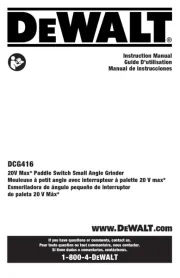
29 Juli 2025

15 November 2024
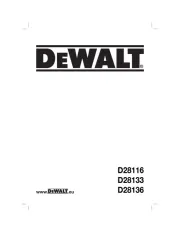
15 November 2024

15 November 2024

6 November 2024
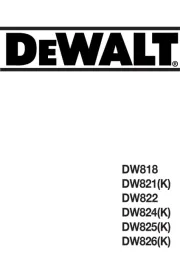
11 September 2024
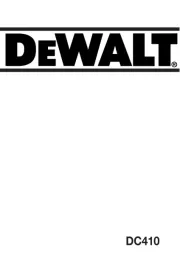
16 Juli 2024
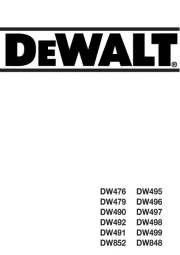
15 Juli 2024

15 Juli 2024

15 Juli 2024
Handleiding Slijpmachine
- Porter-Cable
- ABB
- Genesis
- Ferm
- ATI-ZDL
- Full Boar
- McKenzie
- Stanley
- Mesko
- Rikon
- Craftsman
- Maktec
- Dolmar
- RIDGID
- Silvercrest
Nieuwste handleidingen voor Slijpmachine
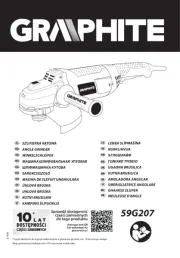
13 September 2025
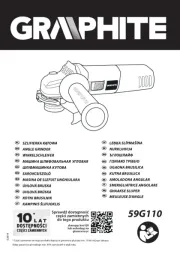
12 September 2025
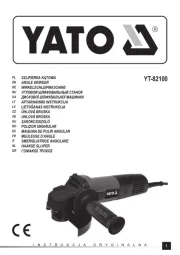
12 September 2025
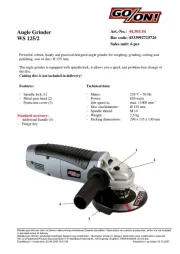
7 September 2025
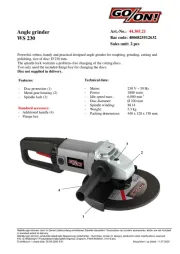
7 September 2025
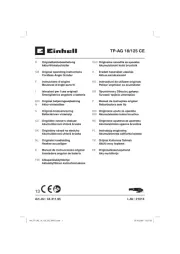
2 September 2025
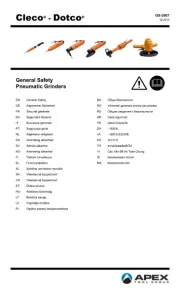
2 September 2025
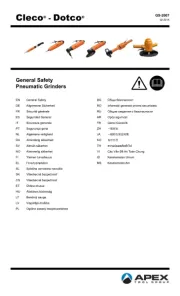
1 September 2025
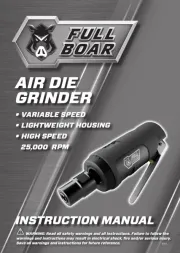
1 September 2025
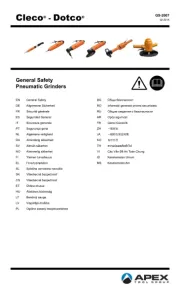
1 September 2025